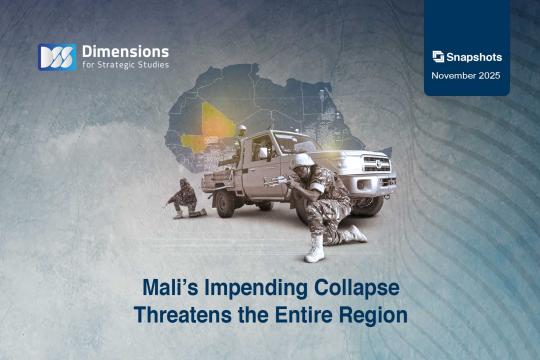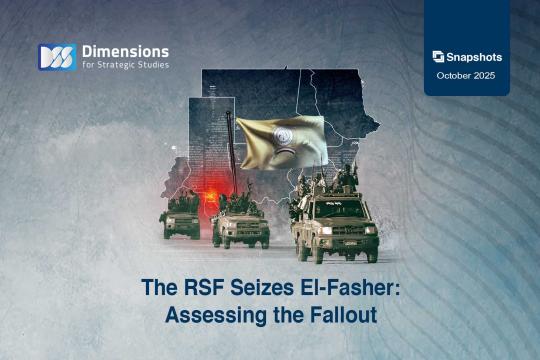
A New Attempt at a Ceasefire in Gaza
2024-02-061956 view
After four months of war in Gaza, a ceasefire framework, finalized in Paris on January 30, has offered a glimmer of hope. Crucially, the participation of Central Intelligence Agency (CIA) chief William Burns, alongside top intelligence officials from Qatar, Israel and Egypt, may indicate that Washington is tempering its unrestrained support for Israel’s assault and seeking an end to the war.
The Devil in the Details
The Paris framework attempts to avoid a major obstacle: the questions of whether there should be a full ceasefire and a withdrawal of Israeli forces from Gaza. Instead, it proposes three stages:
The first focuses on humanitarian issues. It would see the release of all Israeli women and children under 19 held by Hamas, as well as the elderly and the sick, in exchange for a certain number of Palestinian hostages being held by Israel, as well as aid deliveries into the Strip and the start of reconstruction efforts. Meanwhile, Israeli forces would withdraw from populated areas and redeploy to other parts of the strip. This phase would last 45 days.
The second stage would not be limited to a specific timeline, but would focus on an exchange of prisoners, both civilian and military. Permanent truce negotiations would then begin during the third stage, which would also include an exchange of bodies of casualties from both sides. Mediators would also prepare to provide guarantees in order to bind the belligerents to what has been agreed.
This formulation has received more attention from the parties than previous initiatives. The Palestinian factions have expressed their willingness to study it and to negotiate with regional parties on the details, especially as the initiative focuses on exchanges of prisoners and ameliorating the humanitarian catastrophe currently afflicting the Gaza Strip.
The Israeli government has also examined the document, noting via the media that it only provides for a temporary truce, a prisoner exchange and a slight improvement of the humanitarian situation in Gaza. This formula may bypass the objections of Israeli officials who oppose a ceasefire in Gaza but remain keen to reach prisoner exchange agreements. Given that the Paris framework does not explicitly include a ceasefire or a complete withdrawal of the Israeli army from Gaza, there is no justification for such objections raised at Israeli government meetings. Indeed, according to the Qatari Foreign Ministry, the Israeli delegation has told mediators that it approves of the document.
American Pressure on Netanyahu
The new framework was formulated in the context of a complex relationship between the administration of U.S. President Joe Biden and Israeli Prime Minister Benjamin Netanyahu, who heads the most extreme right-wing administration in the history of Israel. Washington, which provides Israel with political cover, unlimited military support and defense at the United Nations Security Council for everything it does, appears to get little in return. Indeed, Israel appears more rebellious against its patron than ever, even after the October 7 intelligence failure starkly demonstrated its fragility and the extent of its reliance on American protection. Things even reached the point where Netanyahu on January 20 publicly refuted Biden’s claims that the Israeli PM had accepted the necessity of establishing a Palestinian state.
Putting aside the credibility of American support for such a state, Israel’s ongoing war on Gaza without any deadline, realistic goals or end game remains a major burden on Biden’s hopes of reelection. Biden would have much preferred to see an end to the war in Gaza before the start of an election year that will decide his political future – yet he has still given Israel more time to reach its goals.
However, given Israel’s failure to achieve its military objectives in Khan Yunis - a repeat of its failure in the north of the Gaza Strip –Washington’s preferred option today is a truce, whether temporary or permanent. It is therefore intervening more seriously than ever before, trying to find a political way out of the morass as the presidential election approaches.
Washington has thus presented Netanyahu with a choice. Either he accepts a truce in Gaza and loses vital political support from the religious far right, or he rejects American efforts and faces losing members of his war council - notably Benny Gantz, who rejects Netanyahu’s moves as sacrificing hostages to protect his own political future. Netanyahu is even accused of “deliberately killing hostages” to evade pressure from their families. It is worth noting that about 30 Israeli hostages have been killed by the Israeli army in Gaza.
American Efforts to Exclude Hamas
The Palestinian factions - especially Hamas - realize that the U.S. expects them to reject the Paris framework. Washington is fully aware of the scale of the humanitarian catastrophe that has befallen the Gaza Strip nearly four months into the war, a disaster that is generating growing global and domestic opposition. Some media have sought to demonstrate the positive aspects of the offer to the Palestinian public, with the aim of embarrassing the factions into accepting it. The factions are trying to overcome this through consultation and coordination.
The Paris document is in line with the declared American position on the Palestinian factions. Washington remains determined that Hamas will not rule Gaza. For Hamas, accepting a temporary truce would come at the cost of its main source of leverage, the Israeli hostages. This would reduce its ability to negotiate a permanent ceasefire contingent on an Israeli withdrawal, which in the Paris formula is postponed until the final stage. While Netanyahu is seeking to obstruct any effort to reach a ceasefire, in order to prolong his political life, Hamas continues to demand a ceasefire and an Israeli withdrawal from Gaza, followed by a negotiated prisoner exchange. Such an arrangement would allow it to preserve its key bargaining chip and block Israeli-American efforts to wipe it out.
It was in this context that U.S. Secretary of State Blinken visited Israel on February 5, attempting to push both sides to stop the fighting and accept the Paris framework. Indeed, this visit differed from his previous trips.
The U.S. has shifted its position for several reasons. Its desire to forestall any return to fighting explains why it is linking efforts for a truce with a negotiated political path that ensures that Hamas no longer rules Gaza. Washington also wants to avoid a wider war in the region, fears fueled by Israel’s transfer of four divisions to its northern border with Lebanon. Israel does not hide its desire to open a new front in the hope of restoring deterrence, which was catastrophically damaged by the Hamas operation of October 7. All this comes ahead of a presidential election in which President Biden is looking increasingly weak.
Israel Rejects Peace Process
In conclusion, the Paris document has been welcomed by many observers, but the document’s political importance stems from only one real source: U.S. pressure, including Biden’s conversation with Netanyahu about the two-state solution on January 20. American pressure has therefore given a glimmer of hope for a ceasefire. However, the points in the framework document do not meet the demands of Hamas, which is likely to raise objections to certain points.
On the other hand, if Blinken’s visit to Israel was an attempt to link the restarting of normalization negotiations with other Arab countries to a peace settlement with the Palestinians, it is likely to come up against Israeli politicians who fundamentally reject any peace process with the Palestinians. After all, when Netanyahu was unable to avoid Biden’s statements in this regard, he was forced to accuse the president of lying, fearing for his own political interests and relationship with the religious right.
In other words, while the American proposal aims to remove Hamas from the political scene in Gaza, Israel has zero interest in a political settlement with the Palestinians at all. This hinders any efforts towards a permanent ceasefire in Gaza.





